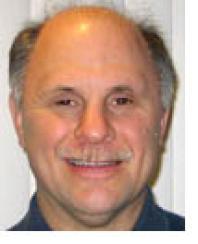
In the past year, SEC chairman Mary Schapiro, enforcement head Robert Khuzami and New York bureau chief George Canellos have made it clear that they are looking closely at the hedge fund world. So are federal prosecutors.
The most dramatic example so far has been the insider trading scandal that brought down the career of Raj Rajaratnam and his New York-based hedge fund advisory firm Galleon Management LP, which last fall was accused of generating more than $25 million in illicit gains. Rajaratnam faces criminal and civil charges.
Less noticed, last May the SEC filed a civil action alleging that Renato Negrin, a former portfolio manager at hedge fund investment adviser Millennium Partners, L.P., and Jon-Paul Rorech, a salesman at Deutsche Bank Securities Inc., in what the regulator called the first insider trading case involving credit default swaps. The case involved the CDS of VNU N.V., which owns Nielsen Media and other media businesses.
The SEC has also signaled it is working on more similar actions against hedge funds.
In fact, last week Bloomberg reported that the SEC recently launched a search to hire five experienced hedge fund hands to join its new asset management unit. The wire service reported the regulator is looking for fund managers, chief operating officers or anyone else with “direct exposure to trading and operations” for the jobs, and will pay between $198,333 and $210,232 per year. (Incidentally, Schapiro makes about $160,000 a year.)
Meanwhile, last week the SEC announced a new initiative with a goal to identify large market participants, collect information on their trades and analyze their trading activity.
The regulator proposed that large traders be required to identify themselves to the commission, which would then assign each trader a unique identification number. Large traders would provide this number to their broker-dealers, who would be required to maintain transaction records for each large trader and report that information to the SEC upon request.
Earlier SEC proposals seek to ban marketable flash orders, bring greater transparency to dark pools of liquidity and prohibit unfiltered access to markets.
“It would give us prompt access to trading information from large traders so we can better analyze the data and investigate potentially illegal trading activity,” said Schapiro in making the announcement. A “large trader” would be generally defined as a firm or individual whose transactions in exchange-listed securities equal or exceed two million shares or $20 million during any calendar day, or 20 million shares or $200 million during any calendar month.
None of this should come as a surprise to most people in the hedge fund community. In fact, last fall Canellos told me in an interview that hedge funds will be undergoing more scrutiny from the SEC. The widely regarded Canellos earlier in his career spent nine years as a federal prosecutor in the U.S. Attorney’s Office for the Southern District of New York, serving as chief of the major crimes unit. He had spent a lot of time working longside the SEC enforcing securities laws, focused on larger-scale white-collar crimes. For part of his tenure at the U.S. Attorney’s Office, Canellos’s boss was Khuzami.
In the interview, he stressed that given the explosive growth of hedge funds as well as private equity firms in the past 20 years, he feels the fact that many hedge funds are unregulated presents challenges, especially since they operate in manners that have some of the characteristics of a broker/dealer, essentially as intermediaries in the market. “We have seen some migration of the market from regulated entities — broker/dealers — to unregulated ones,” he said.
He explained that if you are a hedge fund posting bid and ask prices for a wide range of securities, the hedge fund can act in a way that closely resembles a market maker. “Hedge funds are now major sources of liquidity in the market, and many regularly post bids and asks in a manner akin to broker/dealers,” he added. “Moreover, electronic communication networks allow market participants to cut broker/dealers out of the trade and directly access the bids and asks of other participants, many of which are hedge funds. So hedge funds are major players and intermediaries in the market.”
He stressed that hedge funds that are registered are subject to random inspection by the SEC and, if they are a broker-dealer, by self-regulatory organizations. They are required to maintain critical books and records, such as three years’ of correspondence, emails, trade blotters and customer-related records.
Canellos also said he was concerned by algorithmic trading, dark pools and other trading practices that rely on highly sophisticated technology and lack transparency and confirmed algorithmic trading is an important area for the SEC to understand better. “It is also a very important area for in-house lawyers and compliance staff to understand better,” he added. “Many senior lawyers and compliance personnel at investment managers and broker/dealers that engage in algorithmic trading don’t have a great understanding of what’s behind the curtain, what’s inside the black box that generates huge profits for their firms. Understanding such trading methods and programs is a serious challenge for lawyers, compliance officers and others who are not trained in mathematics and computer programming.”
What is the remedy? Canellos said the SEC is and has been using quantitative methods of its own to help evaluate market risks and identify participants in the market who are worthy of heightened scrutiny — for example, based on the nature of their performance compared with the performance of traders pursuing comparable strategies. He added: “In addition, we have been making clear through our inspections that we expect firms to develop rigorous compliance procedures and controls around their use of quantitative trading techniques.”
Hedge funds should consider themselves warned.
Stephen Taub, who has covered the hedge fund industry for 30 years, is a contributing editor to Institutional Investor and Absolute Return-Alpha magazines.






